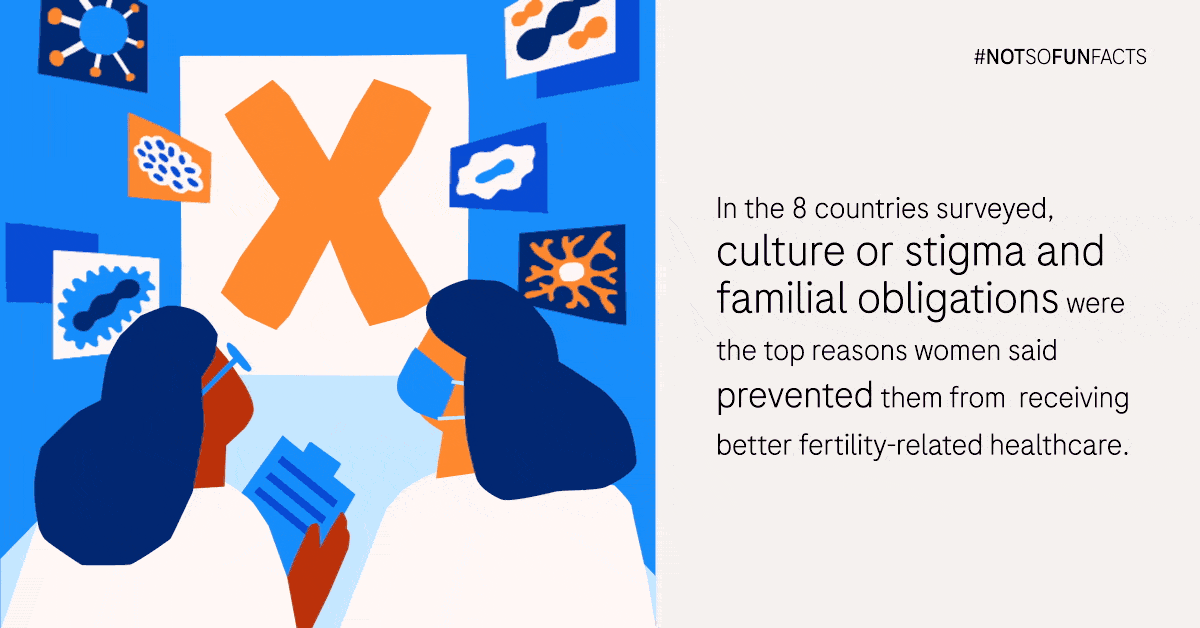The essential role of laboratories in removing stigmas surrounding STIs so that women can be better positioned in their own fertility journey.

When it comes to women’s health, levels of knowledge and awareness on sexual and reproductive health vary in Asia Pacific. Diverse beliefs and cultures often lead to stigmatisation around Sexually Transmitted Infections (STIs). STIs like Chlamydia trachomatis (CT or Chlamydia) and Neisseria gonorrhoeae (GC or gonorrhoeae) can negatively impact the health of women causing a variety of serious consequences, including infertility, ectopic pregnancy and stillbirths,1 when left untreated.
The inequities preventing women from receiving care
While STIs remain largely asymptomatic and/or undiagnosed, biological differences can exacerbate the condition and its impact on women. Factors range from easier tissue penetration to being less likely to have visible symptoms of infection.2 Without detection and treatment, the unchecked infection spreads through the reproductive system and can lead to pelvic inflammatory disease and tubal inflammation (scarring and damage) which can ultimately lead to infertility.
Socially and culturally speaking, there remains a lot of stigma surrounding STIs and infertility, as shown by a survey conducted by Roche Diagnostics Asia Pacific to understand the perceptions of, and access to healthcare for women in Asia Pacific. 73% of respondents said that when a couple faces fertility issues, people in their community assume the female is the source of the issue. Despite the availability of healthcare, culture and stigma (72%) and familial obligations (75%) were the top reasons women said prevented them from receiving better fertility-related healthcare.3

Economically, women are also disadvantaged when seeking healthcare for STIs and infertility. 1 in 3 married women in low-income countries do not have control over major household spending decisions.4 Husbands and family members can restrict a woman from seeking appropriate care, delaying diagnosis and treatment. Due to this imbalance of financial freedom, nearly 1 in 4 women do not feel empowered to seek medical treatment for their own health, let alone fertility-related issues.3 Healthcare systems that are poorly funded with mostly out-of-pocket payments present yet another barrier to women accessing the care needed.5
Diagnostics as the first line of defence in clinical settings
Effective screening programs across the region could create a monumental shift in reducing the burden on health systems, with labs serving as the first line of defence in clinical settings.
There are two main diagnostic methods for detecting the presence of Chlamydia trachomatis and Neisseria gonorrhoeae. This method of culture that is used widely has a low sensitivity of about 63%, which can lead to an inaccurate diagnosis and an inappropriate course of treatment.6
The second diagnostic method, and what is considered the gold standard, is via a PCR test that targets specific nucleic acid sequences in the genomes of Chlamydia trachomatis and Neisseria gonorrhoeae.7 Commonly referred to as nucleic acid amplification testing (NAAT), it offers much quicker results at a much higher sensitivity of 99%. Sample collection is much less invasive, and in some cases even allows for the sample to be self-collected. This provides a patient with the independence and comfort of testing at their convenience, removing any inhibitions and logistical barriers they might have with seeing a clinician onsite.
While testing efficacy is an issue, so is the underdiagnosis of STIs. It is estimated that only 35% of gonorrhoeae and 56% of chlamydia cases are actually given an official diagnosis.8 Testing for Chlamydia trachomatis and Neisseria gonorrhoeae infections are seldom routinely screened for nor are they included in most health screening packages in Asia Pacific health systems. This is not the case in other parts of the world. Recognising the importance of screening, the US CDC updated its guidelines for the screening and treatment of STIs in 2015, and ramped up efforts to target high-risk groups, as did the National Health Service in the UK.
An accurate and efficient diagnosis also allows the laboratory to provide clear test results to a physician, who will be able to ensure that an appropriate course of treatment is started for the patient. As typical treatment often involves the use of antibiotics, this is especially pertinent as antibiotic-resistant strains of both bacteria have been reported to be on the rise due to the overuse, and misuse of antibiotics.9
While routine screening for STIs are necessary to manage the spread of STIs, it needs to be coupled with greater public health efforts to destigmatise and break down long-held cultural beliefs. National education and awareness programs can support the vital role of diagnostics in the management of STIs and demonstrate how earlier detection can lead to more effective treatment outcomes, and quality of life. Partnerships with other stakeholders in the healthcare ecosystem – like insurance providers – is another to increase awareness for testing and treatment for STI, providing women with the information they need to take care of their health.

The role of the lab goes far beyond the actual test
Timely and accurate diagnostics enables better care, and has the potential to empower women with testing options that overcome cultural barriers in our region. In order for this to take place at scale, it is vital for the voice of the lab to be heard in wider healthcare decision making conversations so that we take a step forward to closing the care gap for women in Asia Pacific.
References:
1 Passos, L.G. et al. (2022) “The correlation between chlamydia trachomatis and female infertility: A systematic review,” Revista Brasileira de Ginecologia e Obstetrícia / RBGO Gynecology and Obstetrics, 44(06), pp. 614–620. Retrieved from: https://doi.org/10.1055/s-0042-1748023.
2 Centers for Disease Control and Prevention. (2023) How STDs Impact Women Differently From Men. Retrieved at: https://www.cdc.gov/nchhstp/newsroom/docs/factsheets/STDs-Women.pdf.
3 Roche Diagnostics Asia Pacific. (2023) Freedom To Be #Every Woman Survey.
4 United Nations. (2015) Poverty, The World’s Women 2015 Report. Retrieved from: https://unstats.un.org/unsd/gender/downloads/WorldsWomen2015_chapter8_t.pdf.
5 The Economic and Social Commission for Asia and the Pacific (ESCAP). (2020) Inequality of Opportunity in Asia and the Pacific – Women’s Sexual and Reproductive Health. Retrieved from: https://www.unescap.org/sites/default/files/SDD-IoO-Womens-SRH-report-v1-7-E.pdf.
6 Centers for Disease Control and Prevention. (2002) Recommendations and Reports: Screening Tests To Detect Chlamydia trachomatis and Neisseria gonorrhoeae Infections. Retrieved from: https://www.cdc.gov/MMWR/preview/mmwrhtml/rr5115a1.htm.
7 Martin, D.H. et al. (2004) “Use of multiple nucleic acid amplification tests to define the infected-patient ‘gold standard’ in clinical trials of new diagnostic tests for chlamydia trachomatis infections,” Journal of Clinical Microbiology, 42(10), pp. 4749–4758. Retrieved from: https://doi.org/10.1128/jcm.42.10.4749-4758.2004.
8 Centers for Disease Control and Prevention. (2017) Sexually Transmitted Disease Surveillance 2016. Retrieved from: https://www.cdc.gov/std/stats16/CDC_2016_STDS_Report-for508WebSep21_2017_1644.pdf.
9 Tien, V., Punjabi, C. and Holubar, M.K. (2019) “Antimicrobial resistance in sexually transmitted infections,” Journal of Travel Medicine, 27(1). Retrieved from: https://doi.org/10.1093/jtm/taz101.














